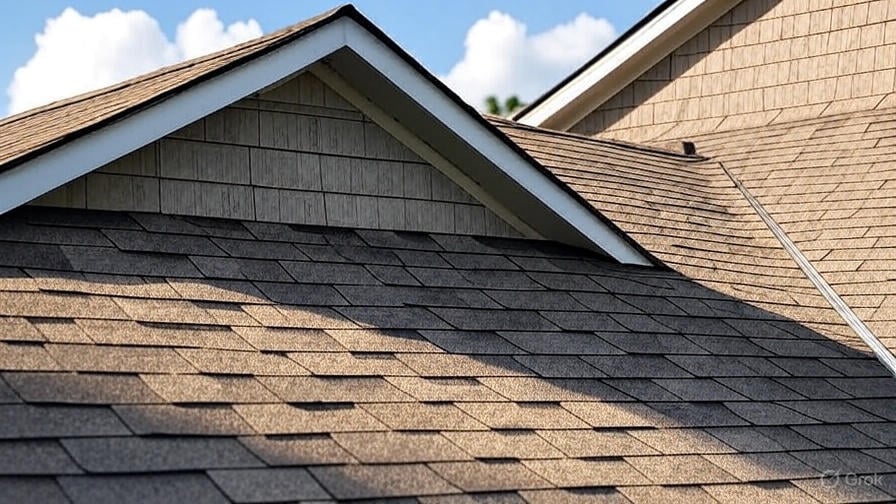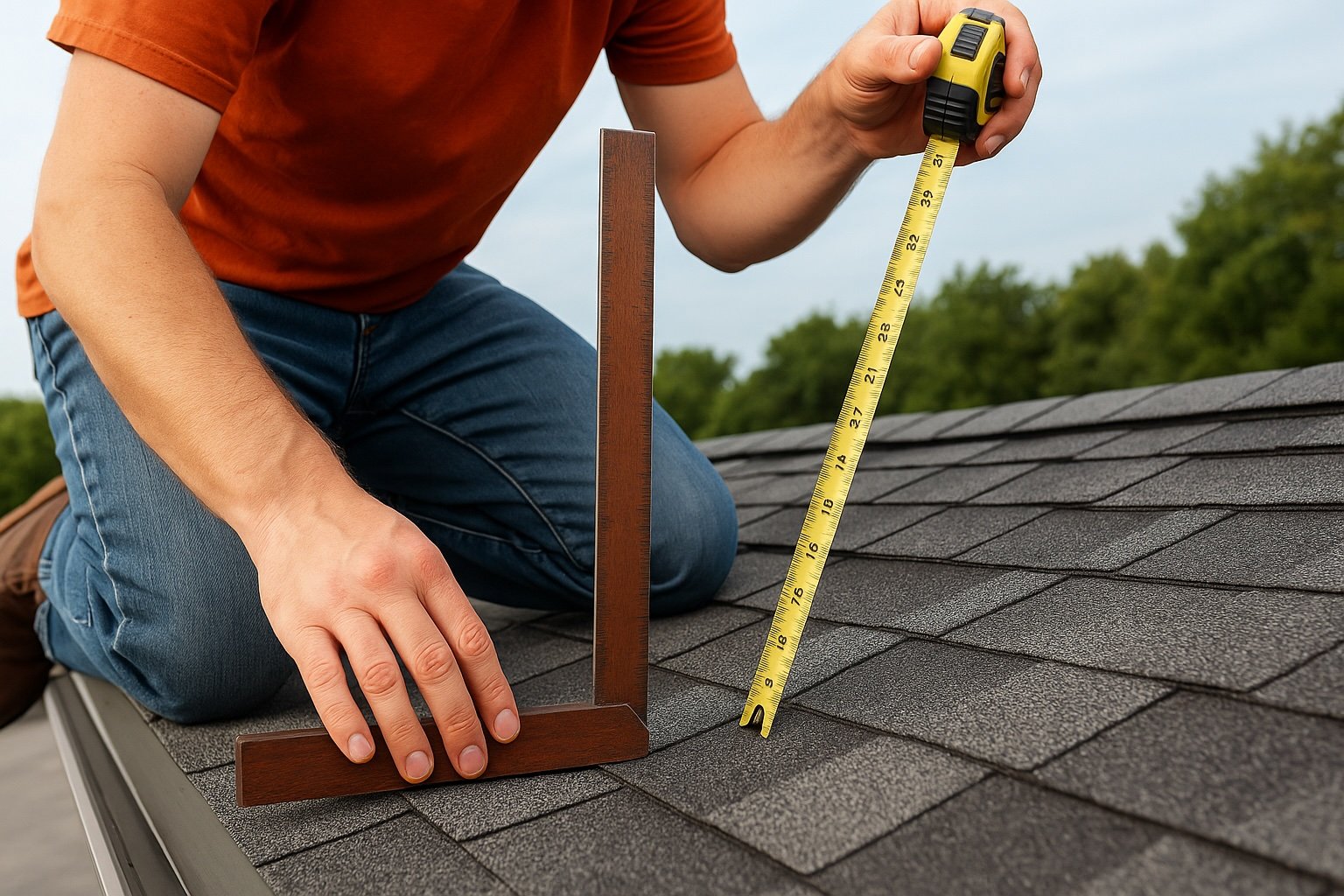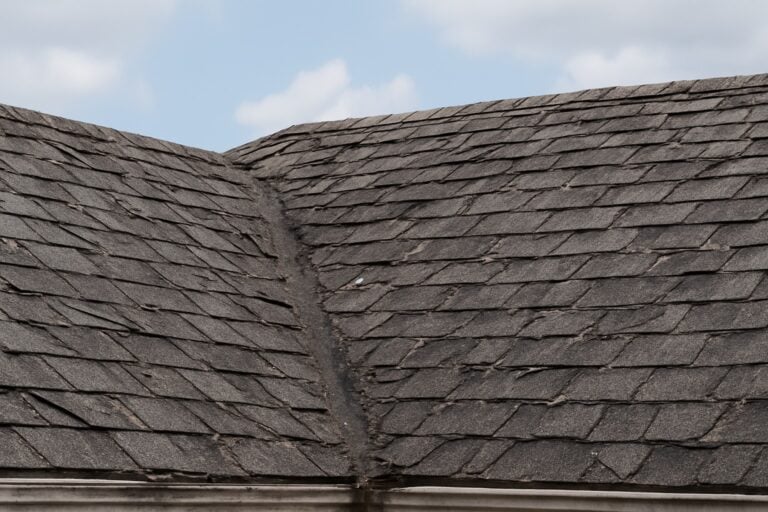Understanding how to calculate roof pitch is essential for homeowners, whether planning renovations, installing new roofing, or ensuring compliance with local building codes. At Steadfast Roofing, based in Riverview, FL, we regularly emphasize the importance of accurately determining roof pitch for a successful roofing project.
What is Roof Pitch?
Roof pitch refers to the angle or slope of a roof. Typically expressed as a ratio, roof pitch indicates how much a roof rises vertically for every 12 inches it extends horizontally (run). Common roof pitches include 4:12, 6:12, and 8:12, reflecting the roof’s steepness.
Importance of Knowing Your Roof Pitch
Accurately calculating roof pitch is critical for several reasons:
- Material Selection: Certain roofing materials function best at specific pitches. Asphalt shingles, metal roofing, or tiles each have recommended pitch ranges.
- Water Drainage: Steeper roofs shed water and debris more efficiently.
- Building Codes: Local codes frequently mandate minimum pitches for specific roof materials to ensure safety and durability.
Tools Needed to Calculate Roof Pitch
Before beginning the calculation, gather the following tools:
- Tape measure
- Carpenter’s level (preferably 18–24 inches)
- Pencil and paper
- Ladder for safe roof access
Step-by-Step Method to Calculate Roof Pitch
Step 1: Safely Access the Roof
Ensure your ladder is secure and stable. Always practice safety precautions when accessing your roof.
Step 2: Measuring the Horizontal Run
Using the carpenter’s level, position it horizontally on the roof’s surface. Measure a 12-inch segment horizontally along the level. Mark this clearly with your pencil.
Step 3: Measuring the Vertical Rise
At the 12-inch mark, measure the vertical distance from the roof surface to the underside of the carpenter’s level. This vertical measurement is your rise.
Step 4: Calculate the Roof Pitch
The roof pitch is expressed as the rise over the run. For instance, if your vertical measurement (rise) is 6 inches, your roof pitch is 6:12.
Alternative Method: Using a Smartphone App
If manual measurement is challenging, smartphone apps designed for roof pitch calculations can quickly deliver accurate results. Simply place your device on the roof’s slope, and the app will provide the angle or pitch instantly.
Common Roof Pitch Types and Their Uses
Low-Slope Roofs (1:12 to 3:12)
- Typically used for commercial buildings.
- Requires specialized materials, such as membrane roofing, to prevent water accumulation.
Medium-Slope Roofs (4:12 to 6:12)
- Commonly used for residential homes.
- Ideal for standard roofing materials like asphalt shingles or metal.
Steep-Slope Roofs (7:12 and above)
- Often used for aesthetic purposes and regions prone to heavy snow.
- Suitable for various roofing materials, including shingles, slate, or tiles.
How Roof Pitch Affects Material Choices
The pitch significantly impacts material selection:
- Asphalt Shingles: Typically recommended for pitches of 4:12 and steeper.
- Metal Roofing: Versatile, suitable for pitches as low as 3:12.
- Tiles: Ideal for pitches 5:12 and steeper, enhancing drainage and longevity.

Calculating Roof Pitch for Complex Roofs
For roofs with multiple slopes and sections:
- Measure each roof section separately.
- Note varying pitches clearly, as complex roofs often require multiple calculations.
Why Accuracy Matters
Miscalculating your roof pitch can lead to improper material selection, inadequate drainage, and compromised structural integrity. Precision ensures a roofing system that stands the test of time, offers optimal performance, and remains compliant with local regulations.
Expert Assistance from Roofing Professionals
While calculating roof pitch is straightforward, professional roofing companies can assist homeowners with precise measurements, advice on material selection, and compliance with local codes. If accuracy is critical, consulting a roofing expert ensures project success and long-term reliability.
Frequently Asked Questions (FAQs)
What is a normal pitch for residential roofs?
Residential roofs commonly feature pitches ranging from 4:12 to 9:12.
Can I change the pitch of my existing roof?
Yes, but altering roof pitch significantly requires major structural modifications and substantial investment.
Do steeper roofs last longer?
Steeper roofs generally provide better drainage, reducing moisture accumulation and prolonging roof life.
CONCLUSION
Understanding how to calculate roof pitch empowers homeowners to make informed decisions about roofing projects. Accurate measurements ensure optimal material selection, proper drainage, and adherence to building codes. When precision and reliability matter, seeking guidance from roofing professionals enhances the integrity and longevity of your roofing system.
Read one of our latest blogs: “3-Tab Shingles: A Comprehensive Guide to Quality Roofing Solutions”.




